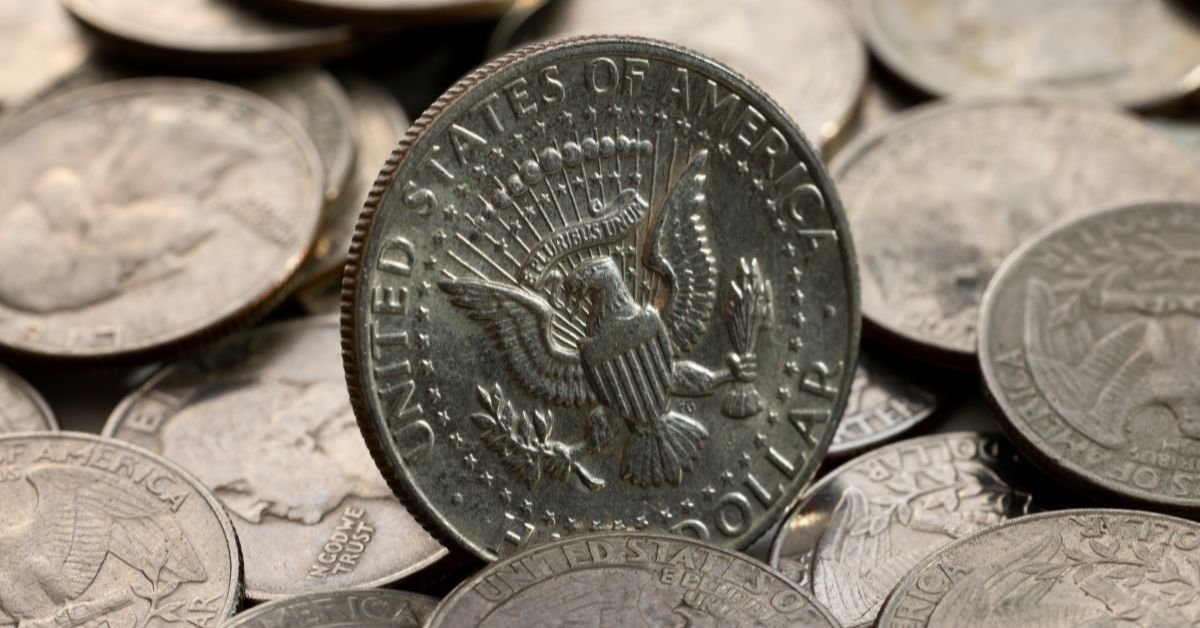BLOG
Rain on Your Wedding Day: A Symbol of Lucky Love

Rain on Your Wedding Day: A Symbol of Lucky Love
Rain on your wedding day has long been considered a radiant sign of fertility, renewal, and blessings. In many cultures around the world, an unexpected shower during vows symbolizes good fortune, emotional cleansing, and a fresh chapter marked by harmony. From cultural wedding traditions in India and Ireland to romantic metaphors in literature, wedding rain is often regarded as a powerful omen of joyful resilience and lifelong unity.
The Cultural Symbolism of Rain in Weddings
Fertility and Prosperity in Global Traditions
Across cultures, rain is intrinsically linked to fertility. In Hindu ceremonies, raindrops are seen as divine blessings from Indra, the god of rain, ensuring abundance and prosperity for newlyweds. Similarly, Native American wedding songs reference rain as a vital element that nurtures the land, emphasizing spiritual growth and harmony. Rain’s nurturing essence reminds couples of the importance of cultivating love and mutual care throughout their marriage.
Cleansing Emotions: Purification and Renewal
Raindrops during a wedding evoke themes of emotional cleansing. Just as nature sheds old leaves, rain symbolizes the washing away of past hardships, pride, and friction—paving the way for a fresh start. Psychologically, this natural purification resonates with couples embracing honesty, vulnerability, and transformed perspectives as they embark on a new life together.
Emotional and Psychological Impact of Rainy Ceremonies
Romantic Imagery and Emotional Connection
When vows are exchanged under a gentle drizzle, an almost cinematic atmosphere unfolds. The visual beauty of rain—droplets clinging to petals, soft light reflected on wet pavements—heightens emotional intensity. Couples often report feeling more connected and present, marking the moment as uniquely intimate and memorable. Rain becomes a metaphor for the passion and depth that will characterize their union.
Resilience in the Face of Unpredictability
Wedding rain also demonstrates a couple’s capacity to embrace life’s uncertainties. A bit of wet weather challenges the original plan, yet when partners adapt with humor and grace, they signal to each other—and to loved ones—that their bond will stand strong through unforeseen challenges. It’s a potent symbolism of agile teamwork in marriage.
Natural Romance: Why Couples Cherish Rainy Weddings
Infused With Natural Beauty and Atmosphere
There’s something undeniably poetic about rain on wedding photos and settings. Color palettes become enriched, with lush greenery shining vibrantly, bouquets adorned with raindrop highlights, and venues illuminated by glistening reflections. This aesthetic depth elevates wedding photography—creating timeless visuals that stand apart from sunny-day clichés.
Authentic Moments and Spontaneity
When unexpected weather occurs, true emotions emerge. Giggling through a sudden shower, sharing a single umbrella, or dancing barefoot on wet grass—such spontaneous moments weave authenticity into the wedding tapestry. These candid interactions often become treasured stories rather than scripted highlights, encapsulating genuine joy and vulnerability.
Bridging Superstitions and Modern Romanticism
Myth Meets Meaning in Wedding Lore
Folklore from around the globe reinforces rain’s auspicious nature. In Scotland, it’s believed that rain purifies the soul and ensures true love’s endurance. In West Africa, a wedding rain shower is considered a gift from ancestral spirits, guaranteeing wisdom and protection for the couple. Though rooted in superstition, these narratives resonate due to their poetic portrayal of love’s transformative power.
Science and Psychology Behind Positive Interpretations
Modern psychology suggests that reframing unexpected rain can influence emotional wellbeing. Couples who adopt a positive outlook—viewing rain as blessing rather than inconvenience—tend to feel more content and satisfied during their event. This mindset shift aligns with gratitude practices, revealing how cultural symbolism and positive thinking intersect to shape wedding day experiences.
Practical Tips: Embracing Rain with Grace
Plan for Flexibility and Comfort
Allowing for rain contingency in your wedding planning ensures you aren’t caught off guard. Renting stylish clear umbrellas, waterproofing venues, and adding cozy areas with blankets and heaters for guests can transform showers into charming features rather than setbacks. Rain-ready planning reflects thoughtfulness that enhances both style and comfort.
Capturing the Mood in Photography
Professional wedding photographers often anticipate and embrace rainy weather. Techniques like backlighting rain for sparkling effects or shooting through droplets on glass create romantic, ethereal images. Couples may also opt for creative props—a vintage umbrella or clear parasol—for both practicality and visual flair.
Infusing Ceremony with Rain Themes
Incorporate rain symbolism into your ceremony rituals or vows. Couples might include poetic readings or songs about rain’s cleansing power, or integrate elements like rainwater unity candles. Even a brief interlude outside beneath the rain can be memorable and symbolic—one last rain “chapter” before the celebrations resume indoors.
Rain and Reception: Turning Showers into Showstoppers
Themed Decor and Lighting
Capture rain’s beauty with fairy lights, reflective surfaces, and lush greenery. Lanterns and water features amplify the intimate, enchanted ambiance. Centerpieces could incorporate glass vases with floating candles and pebbles, alluding subtly to rain pools and reflections.
Rain-Inspired Cuisine and Beverages
Offer seasonal, comforting fare to complement a rainy setting. A hot chocolate or mulled wine station adds warmth, while menu items like creamy soups or dewy fruit salads resonate with the theme. Signature cocktails referencing rain—like the “Silver Lining Spritz”—can spark conversation and enhance the thematic experience.
Entertainment Highlight: Rainy Vibes
Blend indoor comfort with rain-inspired entertainment outdoors—like a swing under a tree or a rain-soaked dance floor (with anti-slip measures). A skilled MC or DJ can lean into the atmospheric moment with rain-themed playlists or surprise light ‘sparkler rain’ indoors for a dazzling effect.
FAQs
Q: Is it bad luck to have rain on your wedding day?
A: No—across cultures, rain is often seen as a blessing rather than misfortune. It symbolizes fertility, emotional renewal, and resilience, granting auspicious meaning to the ceremony.
Q: How can I still take photos if it rains?
A: Embrace it with clear umbrellas or waterproof covers. Ask your photographer for creative shots using reflections, raindrops on greenery, or silhouette shots against rainy backdrops.
Q: Should I change my plans if rain is predicted?
A: Consider flexible arrangements like a tented venue or an indoor backup space. Keep guests informed with elegant signage or digital updates, and plan rain-safe décor and clothing for a seamless experience.
Q: Can we incorporate rain into our ceremony?
A: Absolutely! You can include a poetic reading or use rainwater in a unity ritual. Even telling guests that rainfall is your “renewal” symbolizes emotional cleansing and fresh starts.
Q: How do guests stay comfortable during rain?
A: Provide thoughtful touches: blankets for chillier weather, drying stations, plush rugs in humid zones, and a warm beverages cart. Attention to small comforts demonstrates care and enhances guest experience.
Conclusion
Rain on your wedding day embodies a timeless metaphor—signifying renewal, abundance, and emotional depth. When approached with optimism, what might seem like a weather challenge becomes a radiant moment: a natural cleansing shower blessing your union. Between the cultural roots of rain as fertility, the romantic ambiance captured in photography, and the psychological uplift of embracing life’s unpredictabilities, a rainy wedding can become a symbol of enduring love.
BLOG
Free Government Laptop: How to Get One

Free Government Laptop The term “digital divide” refers to the gap between individuals who have access to modern information technology and those who do not. This gap disproportionately affects low-income households, senior citizens, and people in rural or tribal areas. In response, various initiatives by the Federal Communications Commission (FCC) and nonprofit organizations have aimed to ensure digital equity for all.
One of the most prominent programs addressing this issue is the Affordable Connectivity Program (ACP). Although primarily focused on subsidizing internet service, ACP also offered a device discount—up to $100 off a laptop or tablet—with a small copay from the recipient. Programs like Lifeline and earlier initiatives such as the Emergency Broadband Benefit (EBB) laid the groundwork for these expanded access solutions.
Government-Backed Programs Offering Laptop Assistance
1. Affordable Connectivity Program (ACP)
The ACP is administered by the Universal Service Administrative Company (USAC) under the oversight of the FCC. While its primary benefit is a monthly internet discount, qualifying households also receive a device voucher of up to $100, which can be applied toward the purchase of a laptop, desktop computer, or tablet. Recipients are required to contribute more than $10 but less than $50 toward the cost.
Although ACP enrollment was paused in early 2024 due to funding limitations, efforts to restore or replace the program continue at state and federal levels. Several participating providers, such as AirTalk Wireless and StandUp Wireless, have continued offering device support to enrolled users while inventory lasts.
2. Lifeline Program
This long-standing program helps reduce monthly phone or internet bills for eligible low-income consumers. While Lifeline does not explicitly offer free laptops, some providers bundle entry-level laptops or tablets with the service. The emphasis is on basic functionality to allow users to access emails, school portals, and telehealth services.
Nonprofits & Local Initiatives That Offer Free Laptops
PCs for People
A reputable nonprofit, PCs for People, provides refurbished desktops and laptops to individuals who meet income requirements or are enrolled in assistance programs. Their devices are often donated by corporations and refurbished to a quality standard suitable for education and work purposes.
Applicants can either order online or visit one of their distribution centers. Devices usually cost between $0 and $50, depending on funding and availability, and come with a limited warranty.
Computers With Causes
This national organization donates laptops and desktops to students, veterans, and people in need. While demand is high, they offer an application form where users can explain their circumstances. Applications are reviewed on a case-by-case basis.
ConnectHomeUSA
An initiative by the U.S. Department of Housing and Urban Development (HUD), ConnectHome provides digital literacy training and internet-enabled devices to residents of HUD-assisted housing. Partnering with internet providers and tech companies, ConnectHome tackles the digital divide from multiple angles—access, affordability, and skills.
What Kind of Laptops Can You Expect?Free Government Laptop
Government and nonprofit programs often offer refurbished laptops, typically donated by businesses or educational institutions. While you may not receive a brand-new MacBook or high-end gaming device, you can expect a basic Chromebook, Dell, HP, or Lenovo laptop suitable for web browsing, online classes, job applications, and light productivity work.
These devices may include:
-
Windows 10 or Chrome OS
-
At least 4GB RAM and 64GB storage
-
Built-in webcam and microphone
-
Wi-Fi and USB connectivity
They’re optimized for utility, not luxury—but they get the job done.
How to Apply: Step-by-Step
-
Check Eligibility
Visit the National Verifier website to check if you qualify for programs like ACP or Lifeline. -
Choose a Provider
Look for local ISPs or nonprofits that partner with these programs. Providers like StandUp Wireless, AirTalk Wireless, and PCs for People have dedicated pages for laptop applications. -
Complete Your Application
Be ready to upload documents such as:-
Proof of government benefits (EBT card, Medicaid letter, etc.)
-
Photo ID
-
Proof of address
-
-
Pay Required Copay (if any)
Depending on the program, you may be required to contribute a nominal fee, typically between $10 and $50. -
Wait for Delivery
After approval, laptops are typically shipped within 1–3 weeks. Some local programs offer in-person pick-up.
Tips to Avoid Scams
Unfortunately, the promise of free laptops attracts fraudulent websites and scam calls. To stay safe:
-
Only apply through official government websites or reputable nonprofits
-
Never pay more than the allowed copay ($10–$50)
-
Look for organizations listed on the FCC’s approved provider list
-
Check website reviews and verify nonprofit status (501(c)(3))
FAQs: Free Government Laptop
Q1: Is the laptop really free, or do I have to pay something?
Most programs require a small copay between $10 and $50 to comply with federal guidelines. Fully free devices are rare but possible through nonprofit donations.
Q2: Can students apply for free laptops separately?
Yes, many nonprofits prioritize students. Some school districts also participate in digital equity grants that provide devices directly.
Q3: Is ACP still active in 2025?
As of mid-2025, ACP has paused new enrollments, but many providers still honor existing benefits. Alternative funding may revive or replace the program.
Q4: What kind of laptop will I receive?
Most recipients get a refurbished device such as a Chromebook or entry-level Windows laptop, suitable for basic online tasks.
Q5: Are these programs available in rural or tribal areas?
Yes. In fact, residents of tribal lands often qualify for enhanced benefits under both ACP and Lifeline.
Conclusion
A free or heavily discounted laptop can be a game-changer for those in need—unlocking access to education, employment, and essential services. Thanks to initiatives like the Affordable Connectivity Program, Lifeline, and the support of dedicated nonprofits, digital inclusion is becoming a reality for millions of Americans.
BLOG
Black Spots on Laptop Screen: What They Mean

Black Spots on Laptop Screen Black spots are usually indicative of LCD damage, pixel failure, or pressure-induced injuries beneath the surface of the screen. A common misconception is that these marks are dirt or surface smudges, but more often than not, they’re the result of internal screen issues. On LED or LCD displays, even minor faults within the liquid crystal layer or the transistor grid can disrupt image rendering, leaving behind unresponsive black areas.
Sometimes, these spots may appear after an accidental drop, excess pressure from closing the lid with an object inside, or from prolonged exposure to high temperatures. In other cases, they may stem from manufacturing defects, particularly in cheaper or older screens.
Dead Pixels vs. Stuck Pixels: A Crucial Difference
One of the first steps in diagnosing black spots involves determining whether you’re dealing with dead pixels or stuck pixels. A dead pixel is a pixel that no longer receives power and appears permanently black. These often cluster and form noticeable patches, especially on dark backgrounds. On the other hand, a stuck pixel may be colored red, green, or blue and might appear as a bright dot rather than a black one.
Dead pixels are generally unfixable without professional intervention or complete screen replacement. In contrast, stuck pixels can sometimes be resolved using software tools or screen massage techniques, though results may vary.
Causes Behind the Appearance of Black Spots
There are several root causes behind the development of black spots on a laptop screen, including:
-
Physical damage: Impact or excessive pressure may rupture the internal layers of the screen.
-
Manufacturing defects: In some cases, faults develop within the display panel during production.
-
Aging hardware: Over time, screens deteriorate, especially if the laptop is subjected to frequent use or environmental stress.
-
Thermal stress: Overheating can lead to pixel burnout or expansion of liquid crystal molecules, causing blotchy dark areas.
-
Moisture ingress: If water or humidity infiltrates the display, it may affect internal circuits or damage the display matrix.
Diagnosing Black Spots at Home Black Spots on Laptop Screen
Before rushing to a technician, you can perform a few simple checks:
-
Display a solid white or black background: This helps in clearly identifying the size, location, and nature of the black spots.
-
Use pixel-checking software: Tools like Dead Pixel Buddy or JScreenFix help in distinguishing dead from stuck pixels.
-
Apply gentle pressure: For minor issues like pressure spots or stuck pixels, lightly massaging the area may offer temporary improvement.
-
Connect to an external monitor: If the black spots don’t appear on the external display, the issue is limited to your laptop’s screen.
Keep in mind, attempting self-repair methods carries risks. Improper pressure or screen manipulation can worsen the damage.
How to Fix or Minimize the Impact Black Spots on Laptop Screen
Professional Repair or Screen Replacement
If the black spots are expanding or result from broken LCD layers, a screen replacement is the most reliable solution. Depending on the brand and model, this could range from affordable to costly. Major brands like HP, Dell, Lenovo, or Apple often offer support or warranty options that may cover screen defects.
Software Solutions
For stuck pixels, running pixel-fixing software that flashes RGB patterns rapidly over the screen may stimulate pixels back into function. These aren’t guaranteed fixes but are worth trying before resorting to hardware repair.
Preventative Measures
To avoid future occurrences:
-
Avoid placing heavy objects on the laptop lid.
-
Keep your laptop in a padded bag during travel.
-
Clean your screen regularly with a microfiber cloth and screen-safe cleaner.
-
Monitor your device’s temperature and prevent overheating.
When Should You Be Concerned?
While a single dead pixel may not significantly affect performance, multiple black spots or spreading blotches may interfere with screen readability and user experience. If you’re a graphic designer, video editor, or professional relying on display accuracy, even minor screen defects can compromise your work.
It’s also worth noting that some manufacturers have a dead pixel policy, where a certain number of dead pixels must be present before a screen qualifies for replacement. Always check your warranty terms or customer service policies.
FAQs: Black Spots on Laptop Screen
Q1: Can black spots on my laptop screen disappear on their own?
In rare cases, if the issue is due to a stuck pixel or temporary pressure, it might resolve itself. However, dead pixels or LCD damage typically do not heal.
Q2: Is it safe to continue using a screen with black spots?
Yes, in most cases. However, if the spots are growing or interfering with visibility, you should consider repair or replacement.
Q3: How much does it cost to fix black spots on a laptop screen?
Depending on the model and extent of the damage, screen replacement can range from $50 to $300 or more. Always get a quote before committing.
Q4: Can software really fix black spots?
Only stuck pixels may respond to software-based solutions. Dead pixels and pressure spots cannot be fixed by software.
Q5: Will factory resetting my laptop remove the black spots?
No. Since black spots are a physical issue, software changes like a reset or reinstalling the OS won’t have any effect.
Conclusion
Black spots on a laptop screen are more than just an eyesore—they’re a sign that something within the display is malfunctioning. Whether it’s a cluster of dead pixels, a patch caused by pressure, or damage from an accidental drop, it’s essential to assess the situation carefully. With early diagnosis, appropriate tools, and preventive care, you can manage or even avoid future screen issues.
BLOG
Silver Secrets: Unearthing the Rarest Dollar Coins in U.S. History

Silver Secrets The United States’ first silver dollar, the Flowing Hair type (1794–1795), introduced the nation’s initial signature coin. With production of fewer than 2,000 in 1794 and a slightly larger run in 1795, survivors are exceptionally scarce. Following that design, the Draped Bust series (1795–1804) introduced over two decades of circulation. However, pieces like the 1804 “Class I” silver dollar—erroneously struck decades after official minting ended—remains among the most mythic, with only eight confirmed examples today, collectively representing multiple millions at auction.
The Seated Liberty and Morgan Dollar Transition
Fast-forward to the mid-1800s, and we see the Seated Liberty dollar introducing refined design with fewer surviving high-grade examples than the preceding series. The iconic Morgan dollar, minted from 1878 to 1921, quickly became a collector favorite due to its artistry and widespread circulation. Yet, rarity emerges in specific mint marks and low-mintage dates like the 1893-S or the proof-only 1921 Morgan, prized for both condition rarity and historical context.
Low-Mintage Legends and Key Dates
The 1893-S Morgan: A Collector’s Holy Grail
Among numismatists, the 1893-S Morgan silver dollar reigns supreme for its extreme scarcity. Designed by George T. Morgan and struck at the San Francisco Mint, its low production—fewer than 1 million coins initially—was further depleted by circulation losses. Today, high-grade specimens routinely fetch over six figures at auctions, especially when graded by top authorities like PCGS or NGC.
The 1870-S Seated Liberty Dollar Mystery
Fewer than a dozen of the 1870-S Seated Liberty silver dollars are known to exist, possibly even fewer today. Theories range from limited minting intended for assay purposes to intentional destruction shortly after striking. Each surviving coin is a museum-quality rarity that elicits intrigue and envy.
Mint Mark Mysteries and Grading Gold Standards
Mint marks—the tiny indicators denoting where a coin was made—often hold the keys to rarity. While the Philadelphia Mint favored the “P” mark, rarer sites like Carson City (marked “CC”), San Francisco (“S”), and New Orleans (“O”) often produced more valuable rarities due to limited production.
Grading services like PCGS and NGC have formalized coin condition assessment, assigning grades from Poor (P-1) to Mint State (MS-70). Coins close to MS-65 or higher are rare in earlier mintings, elevating their value exponentially. A high-grade 1878-CC Morgan or 1895-S Morgan in MS-66 could command mid-six figures, thanks to their condition rarity.
Modern Rarity: Commemoratives and Presidential Dollars
In recent centuries, the U.S. Mint introduced denominations that admire figures and events: Presidential dollars, America the Beautiful series, and silver proofs. Some became rare instantly due to short-lived issues or special finishes.
For instance, the 2000-P Charles W. Fairbanks Presidential dollar had an extremely low mintage of proof specimens, making it a surprise target for hobbyists. Similarly, silver-proof sacramento dollars and “enhanced uncirculated” releases pulled from circulation too soon have piqued collector interest, combining modern minting finesse with unintentional scarcity.
Detecting Rare Errors and Minting Anomalies
Coin errors can elevate common coin types into valuable rarities. Among rare dollar coins, double dies, off-centers, and clipped planchets are prized for minting missteps. Even more exclusive are error silver dollars created by striking proof dies on planchets intended for circulation—unique pieces that enter the market only sporadically, often from collector hoards.
Strategies for Tracking Down Rare Dollars
Auctions, Dealers, and Estate Finds
Major auction houses like Heritage and Stack’s Bowers offer important rare dollar coins with transparent provenance. Estate sales and private collections occasionally surface Seated Liberty or Morgan rarities that had been hidden away, triggering high-profile bidding wars.
Coin Shows and Regional Conventions
Regional shows like the Long Beach Coin Expo or FUN in Florida bring dealers and collectors under one roof. These venues are ideal for inspecting and comparing coins in hand—a critical step when chasing fine-condition silver dollar gems.
Storage, Certification, and Preservation Tips
To preserve collector dollars, store them in inert plastic holders, avoid PVC sleeves, and limit handling to gloves. Grading through PCGS or NGC secures authenticity and builds market confidence, providing both protection and liquidity when the time comes to sell or trade.
Investment Outlook: Silver Dollar Value Trends
The market value of rare silver dollars typically correlates with silver prices, but their ultimate value speaks to scarcity, condition, and collector demand. Top-grade rarities and key dates appreciate faster than bullion. Modernrare issues like certain proof dollars attract lower premiums but benefit from immediate collectibility. A balanced portfolio should blend high-end vintage rarities and contemporary rare releases, offering both stability and upside.
FAQs
Q1: What makes a dollar coin rare and valuable?
Rarity stems from several factors: limited mintage, survival rate in high grades, mint marks from defunct facilities (like Carson City), historical significance, and minting errors that create unique variations.
Q2: How can I verify the authenticity of a rare silver dollar?
Authentication is best done through certified grading services such as PCGS or NGC. These companies examine weight, design details, and metal composition before sealing the coin in tamper-proof holders.
Q3: Are modern commemorative dollar issues worth collecting?
Yes—modern commemoratives or presidential dollars can be valuable due to low mintage, special finishes, and collector demand. However, they generally yield lower investment returns than high-grade vintage coins.
Q4: Can I still find rare silver dollars in circulation?
Finding classic silver dollars in everyday change is nearly impossible today. However, checking old coin collections or inherited boxes may uncover hidden treasures, especially if coins were stored consistently and graded.
Q5: How do grading grades like MS-65 and MS-70 impact value?
Higher grades indicate better preservation and fewer flaws. For rare dates and mint marks, each grade jump (for example, from MS-65 to MS-66) can increase value by thousands—or tens of thousands—of dollars for top-tier coins.
Conclusion
America’s rare dollar coins are more than metal discs—they are narrative-rich artifacts linking economic history, minting alchemy, and national heroes. Whether you gravitate toward the Flowing Hair dollar’s classical simplicity, the iconic Morgan’s artistry, or the sleek modern commemoratives, these silver secrets offer both aesthetic and financial reward.
-

 GAME1 week ago
GAME1 week agoAurora Resupply GTA 5 Guide for PS4 Players
-

 BLOG1 week ago
BLOG1 week agoRagdoll Archers Unblocked: Chaos in Every Shot
-

 BLOG6 days ago
BLOG6 days agoMark Spaeny: Tailoring Success and Raising a Star
-

 BLOG1 week ago
BLOG1 week agoUnmasking the Risks: AI Face Swap in NSFW Content
-

 BLOG1 week ago
BLOG1 week agoThreads of Thought: A Tapestry of Tales
-

 BLOG1 week ago
BLOG1 week agoHydra HD: Power Meets Precision
-

 BLOG1 week ago
BLOG1 week agoVIP League: Your Front Row to Free Sports Streaming
-

 GAME1 week ago
GAME1 week agoEggy Car: The Physics‑Based Egg Balancing Game That’s Going Viral








